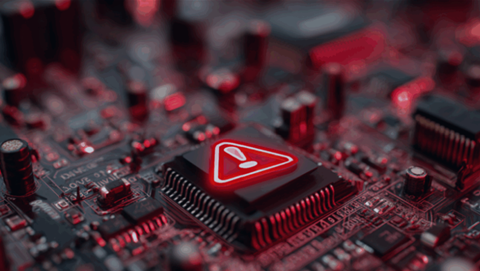As we move into 2025, decision-makers are facing the daunting task of balancing operational efficiency with sustainability efforts. Often regarded as merely a background process, printing is a crucial area where these priorities intersect – and many businesses may still not be aware of how far the technology has advanced, providing eco-efficient solutions that can be tailored to the demands of modern workspaces.
Legacy laser printers are increasingly part of an outdated system. Much like how electric vehicles (EVs) are replacing combustion engine cars, Epson Heat-Free business inkjet printers provide a modern solution that takes sustainability into account – especially as printing habits change. Employing Heat-Free Technology to eject ink without heat, which results in ultra-low power consumption, is a transformative approach that helps enterprises rethink traditional processes for greener outcomes.
Epson’s latest white paper, Road to Sustainable Printing: Exploring Attitudes and Behaviours in Southeast Asia reveals that despite an increased adoption of softcopy file sharing, 40 percent of businesses still rely on daily printing. Moreover, Epson’s recent survey across Southeast Asia reveals 66 percent of decision-makers consider sustainability a key factor in selecting printers, with 53 percent open to transitioning to more environmentally friendly inkjet printers.
The rise of hybrid work and increased digitalisation also demands printing solutions that are flexible, secure, and seamlessly integrated. As such, 44 percent of decision-makers prioritise advanced digital capabilities like cloud printing, second only to sustainability (50 percent).
A game changer in enterprise printing
For decades, laser printers have dominated the corporate world, but their limitations have been revealed alongside evolving workplace needs and sustainability goals. Laser printers’ reliance on heat-intensive processes translates to high energy consumption, increased greenhouse gas emissions, and frequent maintenance. Epson’s business inkjet printers, powered by Heat-Free Technology, break this mold by offering:
- Energy Efficiency: Consuming up to 85 percent1 less electricity than laser models, Epson’s business inkjet printers, powered by Heat-Free Technology, significantly cut operational costs and reduce greenhouse gas emissions.
- Minimal Waste: Fewer consumables and moving parts result in reduced waste and lower maintenance needs, offering both environmental and financial benefits.
- Seamless Integration: Compact designs and advanced digital features make them ideal for hybrid and modern offices.
These innovations empower businesses to meet operational demands while also aligning with sustainability goals.
Success in action: Daikin’s transition to Epson
Daikin Singapore, a leader in air conditioning solutions, serves as a compelling case study of this shift. Situated on a large corporate campus, Daikin faced inefficiencies with employees traveling across the building to access printers, compounded by security concerns with their previous vendor’s unsecured cloud solution. Epson addressed these challenges by installing multiple Workforce Enterprise AM-C4000 printers connected through a shared server. This transformation enabled staff to access any printer within the building seamlessly, improving workflow efficiency and saving valuable time.
Epson’s Print Admin (EPA) software added robust security measures, including PIN-protected printing, IP address filtering, access controls, and an administrative panel to prevent unauthorized changes to settings. These features, combined with a secure cloud solution, provided Daikin with comprehensive security coverage. Additionally, the Heat-Free Technology in Epson’s Business Inkjet Printers aligned with Daikin’s commitment to sustainability by reducing energy consumption and offering customisable solutions tailored to workplace needs.
Bridging the sustainability awareness gap
But even despite this growing awareness, misconceptions about sustainable printing technologies persist. According to Epson’s white paper, 34 percent of Southeast Asian decision-makers believed laser printers are more eco-friendly than inkjets – while only 29 percent correctly identified inkjet printers as the more eco-conscious option.
Encouragingly, 53 percent of respondents are willing to switch to inkjet printers if shown tangible eco-efficient outcomes. This indicates a clear opportunity for education, highlighting how Epson’s innovative solutions can deliver both sustainability and cost savings. By bridging this knowledge gap, Epson is empowering businesses to make informed, impactful decisions.
Of course, factors such as cost remain a barrier for choosing an Epson Heat-Free business inkjet printer for more than half of respondents – but 63 percent are ‘likely’ or ‘very likely’ to pay more for sustainable printing solutions. The key here is education and understanding the long-term benefits of investing in sustainable technology.
In today’s offices, only central air conditioning and lighting consume more energy than office automation equipment, with printers and multifunction printers (MFPs) accounting for as much as 10 percent2 of power consumption. Replacing laser printers with Epson’s Heat-Free business inkjet printers can cut printing-related electricity usage, reducing environmental impact due to reduced CO2 emissions.
People consider energy efficiency and minimising power consumption to be of the greatest importance – but it’s also imperative to showcase how these environmental benefits translate to dollars and cents.
Epson strongly believes that innovation can make an economic case for climate-friendly action. The future relies on sustainable technologies, and it looks promising. With our philosophy of developing efficient, compact and precise technologies, Epson will continue to champion sustainability as a foundational business practice.
-----------------------------------------------------
1Testing was commissioned by Epson and conducted by Keypoint Intelligence. One specific model was selected from colour laser multifunction printers in the 65-70 ppm class. Epson WorkForce Enterprise WF-C21000 with 100 ppm (equivalent model in Europe was used during the evaluation). This data is as of September, 2020. Devices were tested in default mode as per Keypoint Intelligence’s proprietary standard energy consumption test methods. Calculations were based on a weekday workload of 2 x 4 hours printing + 16 hours in sleep/standby mode, and weekend energy use of 48 hours in sleep/standby mode. A total of 69 pages of workload test pattern using DOC, XLS, PPT, HTML, PDF files and Outlook email messages were printed six times in each 4-hour printing period.
2 Epson research based on data from a commissioned survey conducted in March 2018 by SOMPO Risk Management & Health Care Inc.









